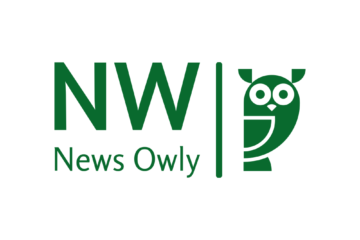From Black Hat to White Hat: Strategies for Ethical and Effective Cloaking Ads

Cloaking Ads
In the ever-evolving landscape of online advertising, marketers are constantly seeking innovative strategies to reach their target audience. One such technique that has garnered both intrigue and controversy is cloaking ads. Originally associated with black hat tactics, cloaking ads have often been used to deceive search engines and users alike. However, when executed ethically and effectively, cloaking ads can be a powerful tool for delivering relevant content to users while maintaining compliance with advertising guidelines. In this article, we will delve into the world of cloaking ads, exploring its evolution from black hat to white hat strategies and providing insights into ethical and effective implementation.
Understanding Cloaking Ads
Cloaking, in the context of online advertising, refers to the practice of presenting different content or URLs to search engines and users. Historically, cloaking has been employed by black hat marketers to manipulate search engine rankings and drive traffic to low-quality or malicious websites. This unethical use of cloaking often involves displaying content to search engine crawlers that is different from what users see, violating search engine guidelines and deceiving users.
However, not all cloaking is inherently nefarious. In its essence, cloaking can also be used for legitimate purposes, such as delivering personalized content based on user demographics or geographic location. When used responsibly, cloaking can enhance user experience by presenting relevant information to users in real-time.
Evolution of Cloaking Strategies
As search engines have become more sophisticated in detecting and penalizing black hat techniques, the landscape of cloaking has evolved. Marketers and advertisers have adapted their strategies to comply with search engine guidelines while still leveraging the benefits of cloaking.
One of the key advancements in cloaking strategies is the focus on ethical practices and transparency. White hat cloaking techniques prioritize delivering consistent and relevant content to both search engines and users. This involves ensuring that the content presented to search engine crawlers accurately reflects the content that users will see, thereby maintaining transparency and integrity.
Additionally, advancements in technology have enabled more precise targeting and personalization in cloaking ads. By leveraging data analytics and machine learning algorithms, advertisers can tailor content to individual users based on their browsing history, preferences, and behavior. This not only improves the effectiveness of cloaking ads but also enhances the user experience by delivering content that is highly relevant and engaging.
Ethical Considerations in Cloaking Ads
Despite its potential benefits, cloaking ads must be approached with careful consideration of ethical implications. Transparency and honesty should be the guiding principles in any cloaking strategy. Advertisers should ensure that the content presented to users accurately represents the advertised product or service, avoiding any misleading or deceptive tactics.
Moreover, privacy concerns must be addressed when implementing cloaking ads. Advertisers should be transparent about the data collected and how it will be used to personalize content. Respecting user privacy and adhering to applicable data protection regulations is essential to building trust with consumers.
Furthermore, advertisers should prioritize the user experience when designing cloaking ads. Content should be engaging, relevant, and easy to navigate, enhancing the overall browsing experience for users. Advertisers should also provide clear options for users to opt out of personalized advertising if desired, respecting their preferences and autonomy.
Best Practices for Effective Cloaking Ads
To ensure the ethical and effective implementation of cloaking ads, advertisers should follow these best practices:
- Transparency: Provide clear and accurate information to both search engines and users about the content being presented.
- Relevance: Tailor content to the interests and preferences of individual users, ensuring that it is highly relevant and engaging.
- Compliance: Adhere to search engine guidelines and industry regulations to avoid penalties and maintain trust with consumers.
- Privacy: Respect user privacy by transparently disclosing data collection practices and providing options for opting out of personalized advertising.
- User Experience: Prioritize the user experience by designing ads that are visually appealing, easy to navigate, and non-intrusive.
Conclusion
Cloaking ads have come a long way from their association with black hat tactics to being recognized as a legitimate marketing strategy when executed ethically and effectively. By focusing on transparency, relevance, compliance, privacy, and user experience, advertisers can leverage cloaking ads to deliver personalized content to users while maintaining integrity and trust. As technology continues to advance, the future of cloaking ads holds promise for enhancing the online advertising landscape in a responsible and ethical manner.
Leave a reply
You must be logged in to post a comment.











